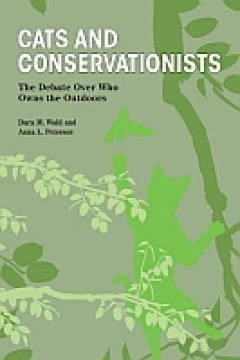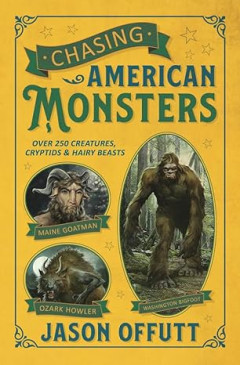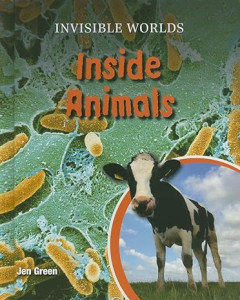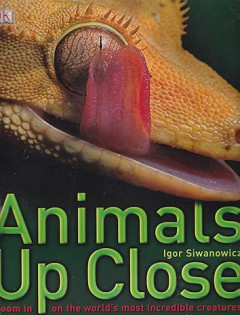Ditapis dengan
E-book The Unnaming of Aliass
Nameless, Tennessee is a small unincorporated patch-work of farmlands and home plots that sits atop a Cum-berland hill, east of Nashville, west of Knoxville, and not far from a manmade lake called Cordell Hull, managed by the us Army Corps of Engineers. Nameless is barely a dot on the map – grid coordinates G12 in the Tennessee Gazetteer, to be exact. On that day we p…
- Edisi
- -
- ISBN/ISSN
- 9781953035134
- Deskripsi Fisik
- 355 hlm
- Judul Seri
- -
- No. Panggil
- 636 BOL t

E-book Cats and Conservationists: The Debate Over Who Owns the Outdoors
Cats and Conservationists is the first multidisciplinary analysis of the heated debate about free-roaming cats. The debate pits conservationists against cat lovers, who disagree both on the ecological damage caused by the cats and the best way to manage them. An impassioned and spirited conflict, it also sheds light on larger questions about how we interpret science, incorporate diverse perspec…
- Edisi
- -
- ISBN/ISSN
- 9781557538888
- Deskripsi Fisik
- 162 halaman, ilus.
- Judul Seri
- -
- No. Panggil
- 362 WAL c
E-book Animal Husbandry Regained The Place of Farm Animals in Sustainable Agr…
The farming of animals for meat and milk confronts a stark dilemma. While world demand from a growing and more affluent human population is increasing rapidly, there are strong counter-arguments that we should eat less meat and pay more attention to environmental protection, animal welfare and human health and well-being. The aim of this book is to identify and explain the causes and contr…
- Edisi
- -
- ISBN/ISSN
- 9781849714204
- Deskripsi Fisik
- 265 halaman, ilus.
- Judul Seri
- -
- No. Panggil
- 636 WEB a

E-book Chasing American Monsters: Over 250 Creatures, Cryptids & Hairy Beasts
The Black Dog of Hanging Hills, the Tommyknockers of Pennsylvania, the Banshee of the Badlands?these beasts and hundreds more will hold you spellbound, unable to look away from their frightful features and their extraordinary stories. Come face to face with modern-day dinosaurs, extraterrestrials, dragons, lizard men, giants, and flying humanoids. This illustrated collection includes more than …
- Edisi
- -
- ISBN/ISSN
- 9780738759951
- Deskripsi Fisik
- 347 halaman, ilus.
- Judul Seri
- -
- No. Panggil
- 398.2 OFF c
E-book Grassland use in Europe
Grass seeds include the coleoptile (shoot sheath), the scutellum, the radicula and the coleorrhiza (root sheath) (Figure1.1). The scutellum is homologous to the leaf lamina of the cotyledon and the coleoptile to the leaf sheath of the cotyledon. Co-leoptile and coleorrhiza are membranes that protect shoot and leaf meristems and the radicula, respectively, during the first step of the germinatio…
- Edisi
- -
- ISBN/ISSN
- 9782759231461
- Deskripsi Fisik
- 267 hlm
- Judul Seri
- -
- No. Panggil
- 636 PEE g

E-book Ranaviruses : Lethal Pathogens of Ectothermic Vertebrates
The family Iridoviridae currently contains fi ve genera, two of which infect invertebrates ( Iridovirus and Chloriridovirus ) and three that infect only ectother-mic vertebrates ( Lymphocystivirus , Megalocytivirus , and Ranavirus ; Jancovich et al. 2015a ). Lymphocy stiviruses and megalocytiviruses only infect fi sh, whereas, as indicated above, r…
- Edisi
- -
- ISBN/ISSN
- 9783319137551
- Deskripsi Fisik
- 254 hlm
- Judul Seri
- -
- No. Panggil
- 591.7 ALL r
E-book Conservation, Markets & the Environment in Southern and Eastern Africa…
This volume is concerned with the practices, discourses, and materialities surrounding the commodification of the ‘wild’ – a topic which has found considerable academic attention in the past decade (Smessaert et al. 2020). The ‘wild’ is commonly conceived of as a conceptual opposite to the destructive tendencies of commodification. The volume’s core concern is wi…
- Edisi
- -
- ISBN/ISSN
- 9781800106642
- Deskripsi Fisik
- 513 hlm
- Judul Seri
- -
- No. Panggil
- 591.7 BOL c

E-book Inside Animals (Invisible Worlds)
Describes the fascinating animal details that are too small for the unaided eye to see, and how these microscopic systems work to keep the animal alive and healthy.
- Edisi
- -
- ISBN/ISSN
- 9780761441953
- Deskripsi Fisik
- 50 halaman, ilus.
- Judul Seri
- -
- No. Panggil
- 573.9 GRE i

E-book Animals Up Close: Zoom in on the World's Most Incredible Creatures
- Edisi
- -
- ISBN/ISSN
- 9780756645137
- Deskripsi Fisik
- 98 halaman, ilus.
- Judul Seri
- -
- No. Panggil
- 571.1 SIW a
- Edisi
- -
- ISBN/ISSN
- 9780756645137
- Deskripsi Fisik
- 98 halaman, ilus.
- Judul Seri
- -
- No. Panggil
- 571.1 SIW a
E-book Animal Death
Animal death is a complex, uncomfortable, depressing, motivating and sensitive topic. For those scholars participating in Human-Animal Studies, it is – accompanied by the concept of 'life' – the ground upon which their studies commence, whether those studies are historical, archaeological, social, philosophical, or cultural. It is a tough subject to face, but as this volume demonstrates, on…
- Edisi
- -
- ISBN/ISSN
- 9781743325247
- Deskripsi Fisik
- 351 hlm
- Judul Seri
- -
- No. Panggil
- 590.7234 ARM a
Ebook The Cat Encyclopedia
- Edisi
- -
- ISBN/ISSN
- 9781465419590
- Deskripsi Fisik
- 322 halaman
- Judul Seri
- -
- No. Panggil
- 590.3 FAR t
- Edisi
- -
- ISBN/ISSN
- 9781465419590
- Deskripsi Fisik
- 322 halaman
- Judul Seri
- -
- No. Panggil
- 590.3 FAR t
E-book Animal Rationality : Later Medieval Theories 1250-1350
According to a long-standing philosophical tradition, we humans are ratio-nal animals. This means that we are endowed with certain cognitive powers, namely, intellect and reason, that enable us to engage in various cognitive operations, such as concept formation, judging, or reasoning. It is these opera-tions that shape the way in which we perceive and interact …
- Edisi
- -
- ISBN/ISSN
- 9789004363779
- Deskripsi Fisik
- 285 hlm
- Judul Seri
- -
- No. Panggil
- 591.5 OEL a
E-book Animal Architecture
Journey through the architectural world of animals and explore the function of their constructions - whether for protection or attracting a mate, the results are diverse and extraordinary. Homes play a vital role in animals’ lives, revealing behaviour as well as contributing to their survival. Ingo Arndt has documented these structures in great detail both in the wild and in studio setups, wh…
- Edisi
- -
- ISBN/ISSN
- -
- Deskripsi Fisik
- 28 hlm
- Judul Seri
- -
- No. Panggil
- 590 ARN a
E-book Animal Welfare Act and Animal Welfare Regulations
Passed by Congress in 1966, the Animal Welfare Act (AWA) sets general standards for humane care and treatment that must be provided for certain animals that are bred for commercial sale, sold sight unseen (Internet sales), exhibited to the public, used in biomedical research, or transported commercially. Congress assigned the U.S. Department of Agriculture (USDA) the responsibility for enforcin…
- Edisi
- -
- ISBN/ISSN
- -
- Deskripsi Fisik
- 265 hlm
- Judul Seri
- -
- No. Panggil
- 344.03 USD a
E-book Asia Pacific Fishing Livelihoods
Across the world, fisheries provide direct employment for around 38.982million people (Food and Agriculture Organization [FAO], 2020). In many coastal regions of the world, and particularly in many low-income contexts, fishing livelihoods remain the primary economic activity. Globally, they make significant contributions towards food and nutrition security, and are …
- Edisi
- -
- ISBN/ISSN
- 978-3-030-79591-7
- Deskripsi Fisik
- 119 hlm
- Judul Seri
- -
- No. Panggil
- 591.7 FAB a
 Karya Umum
Karya Umum  Filsafat
Filsafat  Agama
Agama  Ilmu-ilmu Sosial
Ilmu-ilmu Sosial  Bahasa
Bahasa  Ilmu-ilmu Murni
Ilmu-ilmu Murni  Ilmu-ilmu Terapan
Ilmu-ilmu Terapan  Kesenian, Hiburan, dan Olahraga
Kesenian, Hiburan, dan Olahraga  Kesusastraan
Kesusastraan  Geografi dan Sejarah
Geografi dan Sejarah